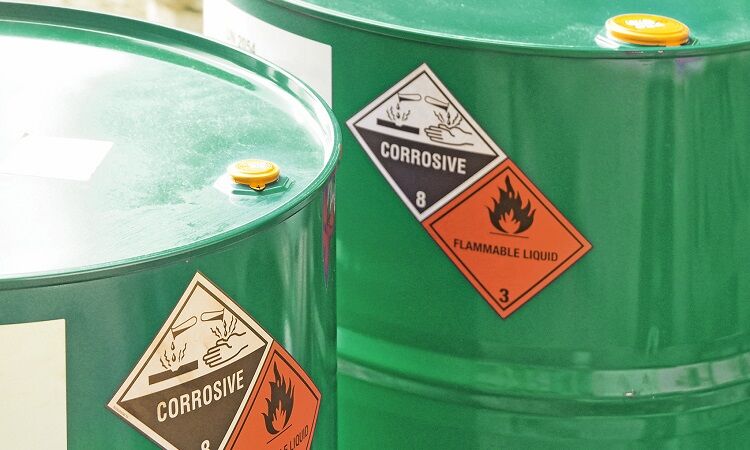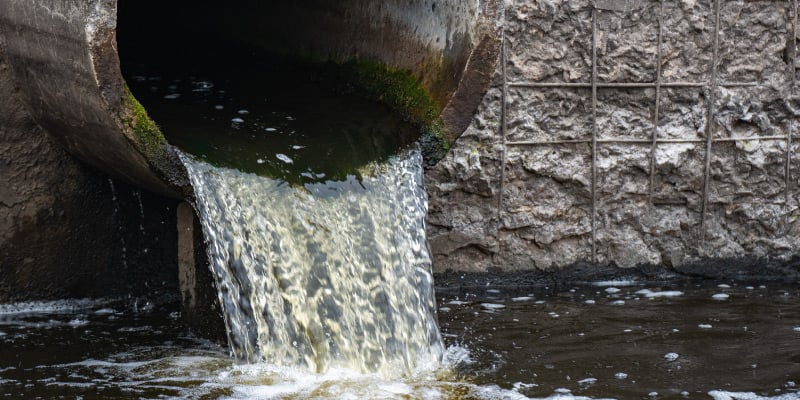Ingenious Industrial Wastewater Treatment Solutions: Safeguarding the Environment
Wiki Article
Just How Liquid Garbage Disposal Functions: An In-depth Summary of Techniques and Technologies Employed

Overview of Liquid Waste Kind
The complexity of fluid waste types demands a thorough understanding of their features and ramifications for disposal. Fluid waste can broadly be categorized right into several types, consisting of industrial, municipal, farming, and contaminated materials. Each group shows unique buildings, calling for specific administration methods to minimize environmental and health and wellness dangers.
Industrial liquid waste originates from making processes and usually includes a variety of impurities, such as hefty metals, solvents, and organic compounds. Local liquid waste, mostly comprising wastewater from households and commercial establishments, includes organic matter, nutrients, and virus (industrial wastewater treatment). Agricultural fluid waste, consisting of drainage from farms, may include fertilizers, pesticides, and animal waste, positioning threats to water top quality and ecological communities
Dangerous fluid waste is characterized by its toxicity, sensitivity, or possible to create harm. Recognizing these varied fluid waste types is important for creating effective disposal techniques and making sure conformity with ecological guidelines.
Physical Therapy Approaches

Testing is the initial step, where bigger fragments and particles are eliminated from the liquid waste making use of displays or grates. In sedimentation containers, larger bits work out at the base, developing a sludge layer, while the clarified liquid can be more dealt with.
Filtration is another important technique that includes passing the liquid through permeable materials, such as sand or membranes, to record smaller sized bits. This step boosts the high quality of the liquid, making it appropriate for succeeding treatment procedures.

Chemical Treatment Techniques
Chemical therapy techniques are necessary for successfully managing liquid waste, specifically in dealing with liquified and colloidal contaminants that physical methods may not adequately eliminate. These methods use numerous chemical agents to reduce the effects of, precipitate, or transform harmful substances right into much less dangerous forms.One typical approach is coagulation and flocculation, where chemicals such as alum or ferric chloride are added to promote the aggregation of put on hold particles. This process boosts sedimentation, enabling less complicated elimination of the resulting sludge. Furthermore, oxidation processes, utilizing representatives like chlorine or ozone, are used to damage down intricate natural substances and virus, making the waste safer for discharge or more therapy.
Neutralization is another crucial technique, which adjusts the pH of acidic or alkaline waste streams to neutral degrees, stopping potential injury to downstream systems and the setting. Furthermore, advanced oxidation procedures (AOPs) utilize combinations of oxidants and ultraviolet light to weaken consistent contaminants, accomplishing a greater level of therapy effectiveness.
Organic Therapy Procedures
Biological therapy processes play a crucial function in the monitoring of fluid waste by utilizing bacteria to decay raw material and reduce contaminant levels. These processes can be extensively classified into anaerobic and aerobic treatments, each employing details microbial neighborhoods to attain effective waste degradation.Cardio treatment involves the use of oxygen to assist in the break down of organic materials by microorganisms. This procedure is commonly carried out in triggered sludge systems, where aeration tanks supply a helpful setting for microbial growth, resulting in the oxidation of organic pollutants. The resultant biomass can be divided from treated effluent with sedimentation.
In contrast, anaerobic therapy happens in the absence of oxygen, depending on different microorganisms to damage down organic matter. This method is particularly useful for high-strength waste, as it generates biogas, an eco-friendly power source, while lowering sludge manufacturing. Technologies such as anaerobic digesters are frequently used in industrial and metropolitan applications.
Both anaerobic and cardio organic therapies not only lessen the environmental influence of fluid waste however additionally help with resource healing, making them vital parts of sustainable waste monitoring strategies. Their efficiency, performance, and flexibility support their prevalent implementation throughout numerous industries.
Arising Technologies in Disposal
Cutting-edge strategies to liquid waste disposal are rapidly developing, driven by developments in modern technology and an enhancing focus on sustainability. Among these emerging innovations, membrane bioreactors (MBRs) have gained traction for their capacity to incorporate organic treatment with membrane layer filtering, leading to high-grade effluent that can be reused in various applications. MBRs enable smaller sized impacts and extra effective procedures compared to standard systems.Another promising growth is the usage of anaerobic food digestion integrated with nutrient recovery technologies, which not just treats liquid waste however also produces biogas and recuperates valuable nutrients like nitrogen and phosphorus. This double advantage boosts source efficiency and minimizes ecological effect.
In addition, progressed oxidation procedures (AOPs) are being taken on for the destruction of intricate organic toxins. These techniques make use of effective oxidants and stimulants to damage down impurities at the molecular degree, offering a highly effective option for challenging waste streams.
Moreover, the combination of expert system and artificial intelligence in waste monitoring systems is maximizing functional effectiveness and predictive maintenance, resulting in minimized expenses and enhanced environmental conformity. These innovations mirror a considerable change in the direction of even more effective and lasting liquid waste disposal techniques.
Verdict
To conclude, efficient liquid waste disposal requires a thorough understanding of various techniques and innovations. The assimilation of physical, chemical, and organic therapy techniques guarantees the efficient management of varied waste types. Furthermore, the emergence of ingenious technologies boosts treatment efficacy and promotes sustainability in waste monitoring methods. By continually progressing these methods, it becomes feasible to attend to the growing obstacles related to liquid waste, eventually adding to environmental protection and resource recovery.Fluid waste disposal is a crucial aspect of ecological management, needing an extensive understanding of numerous methods and modern technologies tailored to various waste types. Liquid waste can broadly be categorized right into numerous kinds, including commercial, municipal, farming, and unsafe waste. Agricultural liquid waste, consisting of runoff from farms, may have fertilizers, pesticides, and animal waste, posturing risks to water high quality and communities.
Different physical therapy approaches play an important function in handling liquid waste successfully - industrial wastewater treatment.In verdict, effective fluid waste disposal demands a detailed understanding liquid waste disposal of various techniques and technologies
Report this wiki page